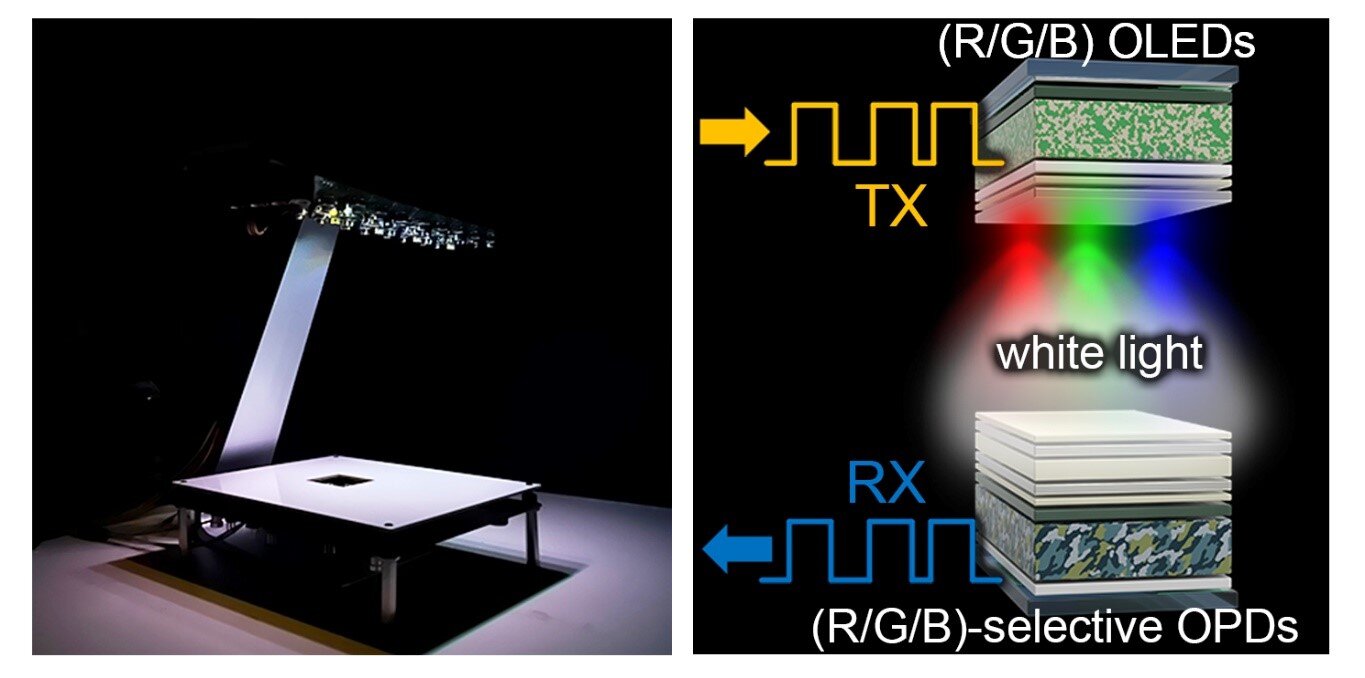
Li-fi, a communication technology harnessing visible light for data transmission, has a potential to surpass Wi-Fi’s speed by more than 100 times and boasts a high bandwidth, facilitating the simultaneous transmission of copious information. Notably, Li-fi ensures robust security by exclusively transmitting data to areas illuminated by light.
Most important, it capitalizes on existing indoor lighting infrastructure, such as LEDs, eliminating the need for separate installations. However, implementing visible light communication (VLC) in practical lighting systems poses an issue of diminished stability and accuracy in data transmission.
Recently, a collaborative team led by Professor Dae Sung Chung, from the Department of Chemical Engineering at Pohang University of Science and Technology (POSTECH), with researcher Dowan Kim, Professor Dong-Woo Jee and Hyung-Jun Park from the Department of Intelligence Semiconductor Engineering at Ajou University, and Professor Jeong-Hwan Lee from the Department of Materials Science and Engineering at Inha University, succeeded in utilizing indoor lighting for wireless communication by reducing light interference with a novel light source. Their findings were published in Advanced Materials.
When light of the same wavelength intersects, interference occurs, resulting in the merging or cancellation of amplitudes. This phenomenon was observed when using LEDs as a single-color light source in VLC technology. To overcome this hurdle, the team developed a novel light source to replace the conventional one. By combining red, green, and blue organic light-emitting diodes (OLEDs), they crafted a light source that mimics standard white illumination but with minimal interference zones.
Furthermore, the team introduced a cavity structure to enhance the OLED’s color representation for each wavelength and incorporated a Fabry-Pérot structure into the light-absorbing organic photodiodes (OPDs) to selectively receive specific wavelengths of light.
The team’s composite white light exhibited a significantly lower bit error rate (BER) than that of conventional light sources. BER, representing the error ratio to the total transmitted bits, serves as a key quantifier of digital signal quality. This remarkable achievement signifies effective suppression of interference among light sources, ensuring accurate information transmission.
Professor Dae Sung Chung, the leader of the consortium, explained, “In contrast to conventional light sources, our light source, which blends three wavelengths, circumvents interference thereby enhancing stability and accuracy in data transmission. We foresee this technology as a potentially beneficial tool for diverse industries, serving as a next-generation wireless communication solution that utilizes conventional lighting systems.”
In a multichannel VLC system, mixed white light is created by using red, green, and blue OLEDs with non-overlapping wavelengths to minimize interference among channels. The system utilizes OPDs that selectively absorb the light. https://techxplore.com/news/2023-12-electric-transmits-faster-wi-fi.html









Recent Comments